Residents gather to view partial solar eclipse
Eclipse. People from miles around came to enjoy the event.
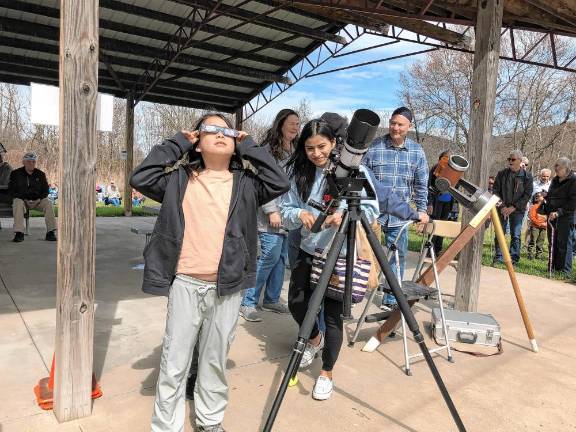
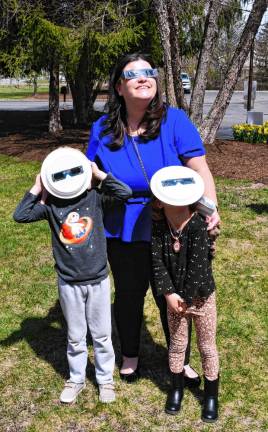
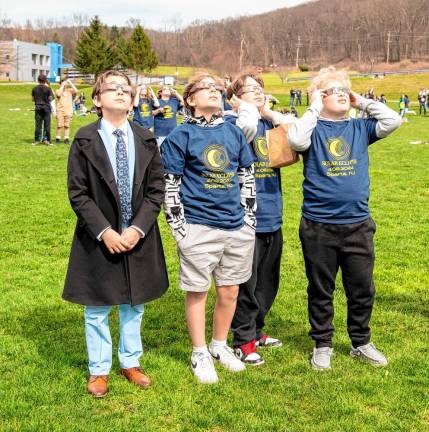
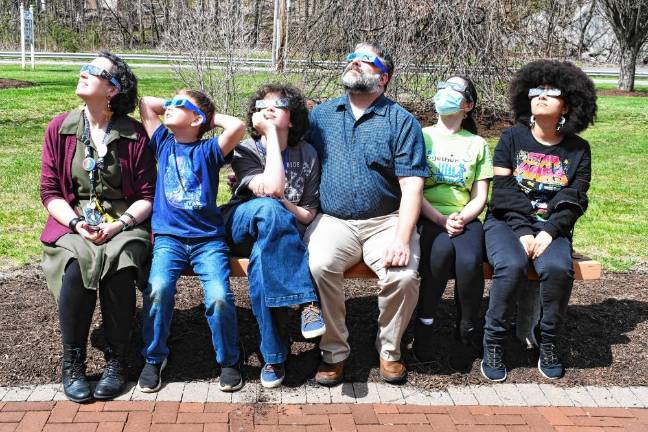
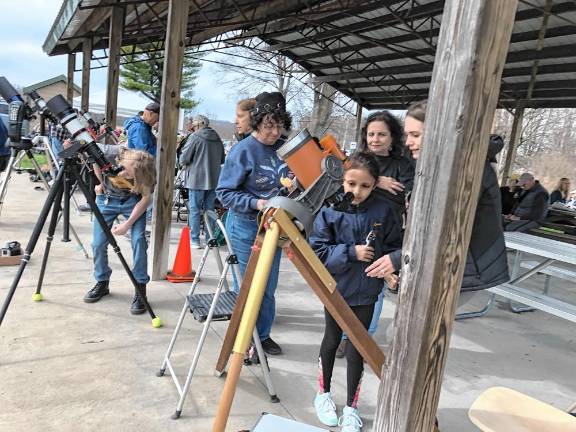
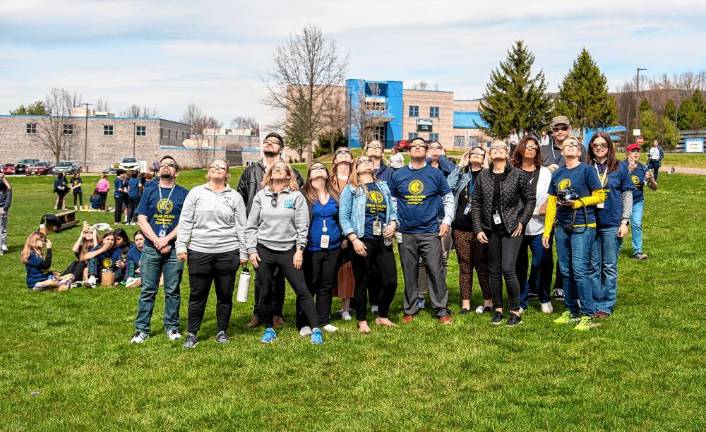
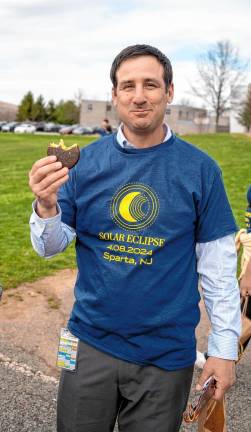

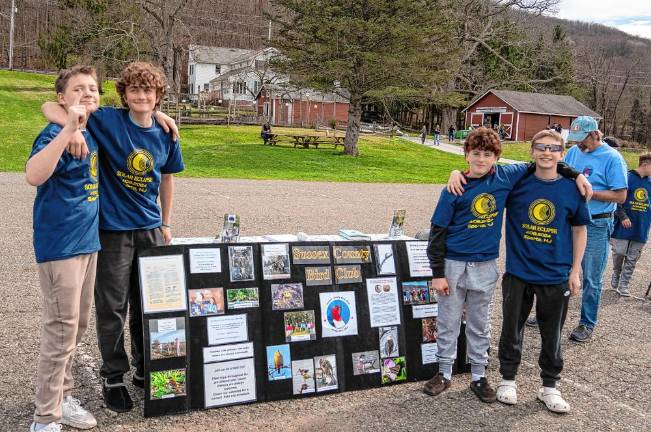
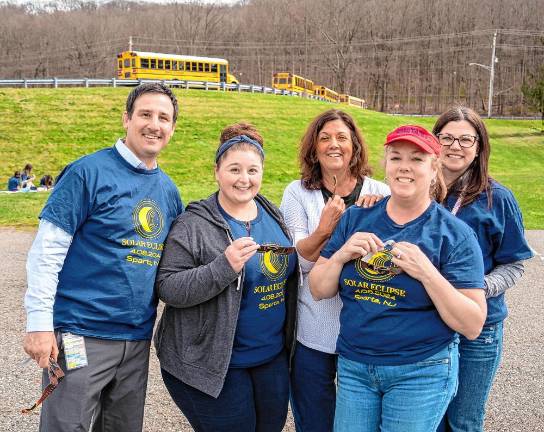
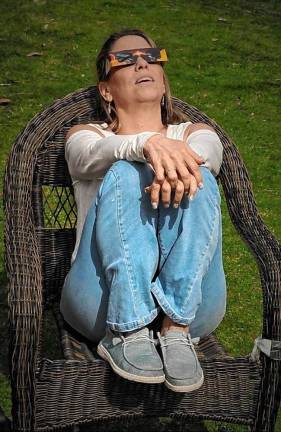
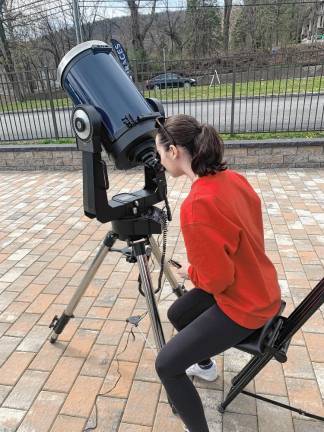
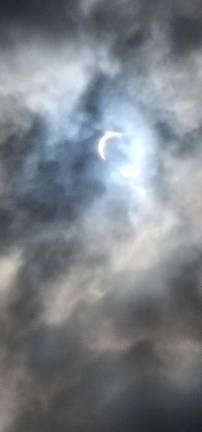
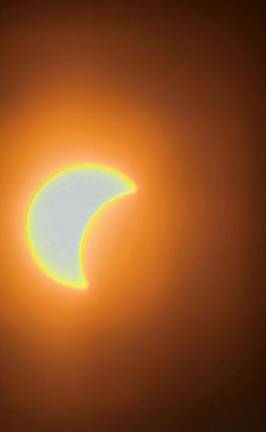
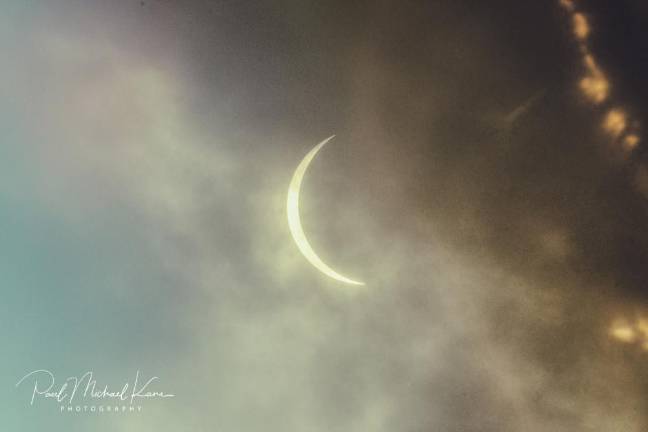
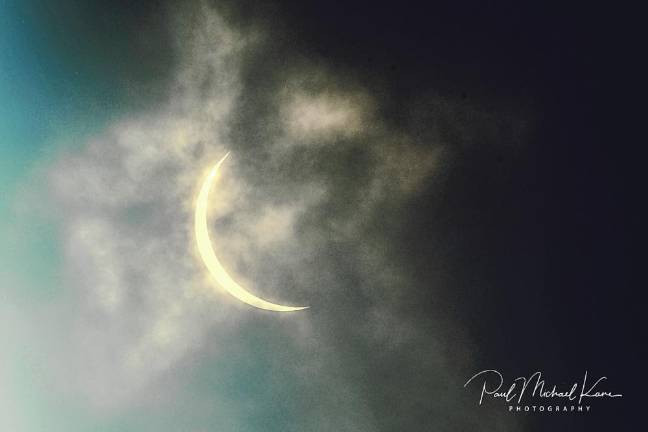
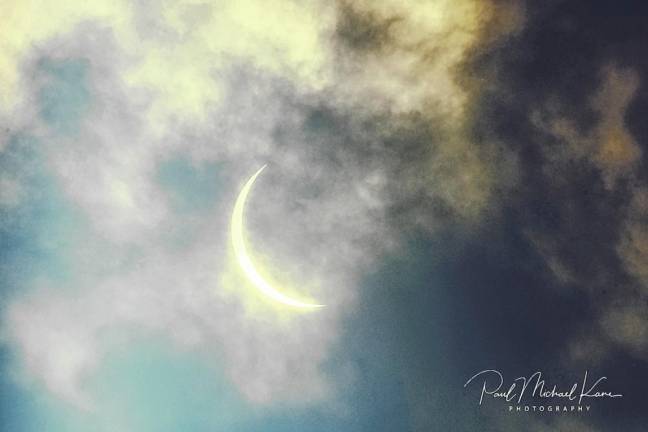
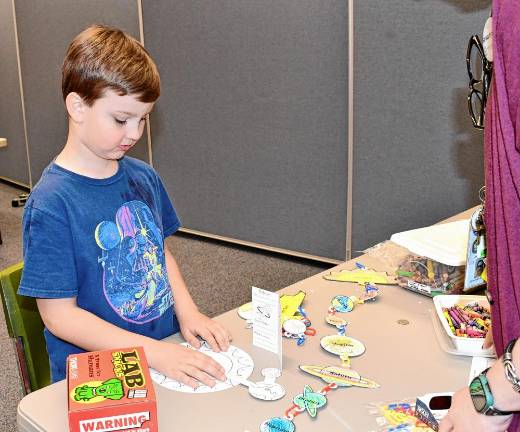
Residents donned safety glasses to watch the moon move across the sun in a partial solar eclipse Monday afternoon, April 4.
At the height of the eclipse at 3:25 p.m., about 92 percent of the sun was expected to be obscured in this area. But thick clouds covered the sun and moon shortly after 3 p.m., frustrating some viewers.
About 275 people gathered at the Wallkill River National Wildlife Refuge in Sussex, where a group of refuge supporters set up five telescopes with solar filters to permit safe viewing.
Giselle Smisko of the Friends of the Wallkill River National Wildlife Refuge said it was difficult to estimate how many people would show up.
For a similar event in 2017, more than 600 people came to the refuge but that was on a Saturday in the summer.
The gathering Monday worked well, she said, with enough parking spaces and safety glasses to accommodate the crowd.
Bob and Wanda Caggiano of Hardyston watched the eclipse at the refuge because they are members of the Friends group. Neither had seen an eclipse before.
“It’s a special event. It’s a once-in-a-lifetime. I doubt we’ll be around for the next one,” he said.
The next total solar eclipse visible in the United States will be in 2044.
Vicky Kaiser, who moved from Wantage to Matamoras, Pa., two years ago, pointed out that the earthquake Friday had a 4.8 magnitude and the eclipse occurred April 8, which can be written as 4/8.
“I believe in signs,” she said. “Whatever religion you practice, whatever you do, God is trying to tell us: Take care of the Earth.”
Sparta Middle School held a viewing party for students and staff members complete with eclipse T-shirts and snacks, such as Sun Chips, Starbursts and Moon Pies.
At the Vernon and Stanhope branches of the Sussex County Library System, children and teens were invited to participate in a Solar Eclipse GLOBE Observer program by recording cloud cover and temperature readings. Those were to be uploaded and analyzed by scientists through a NASA program.